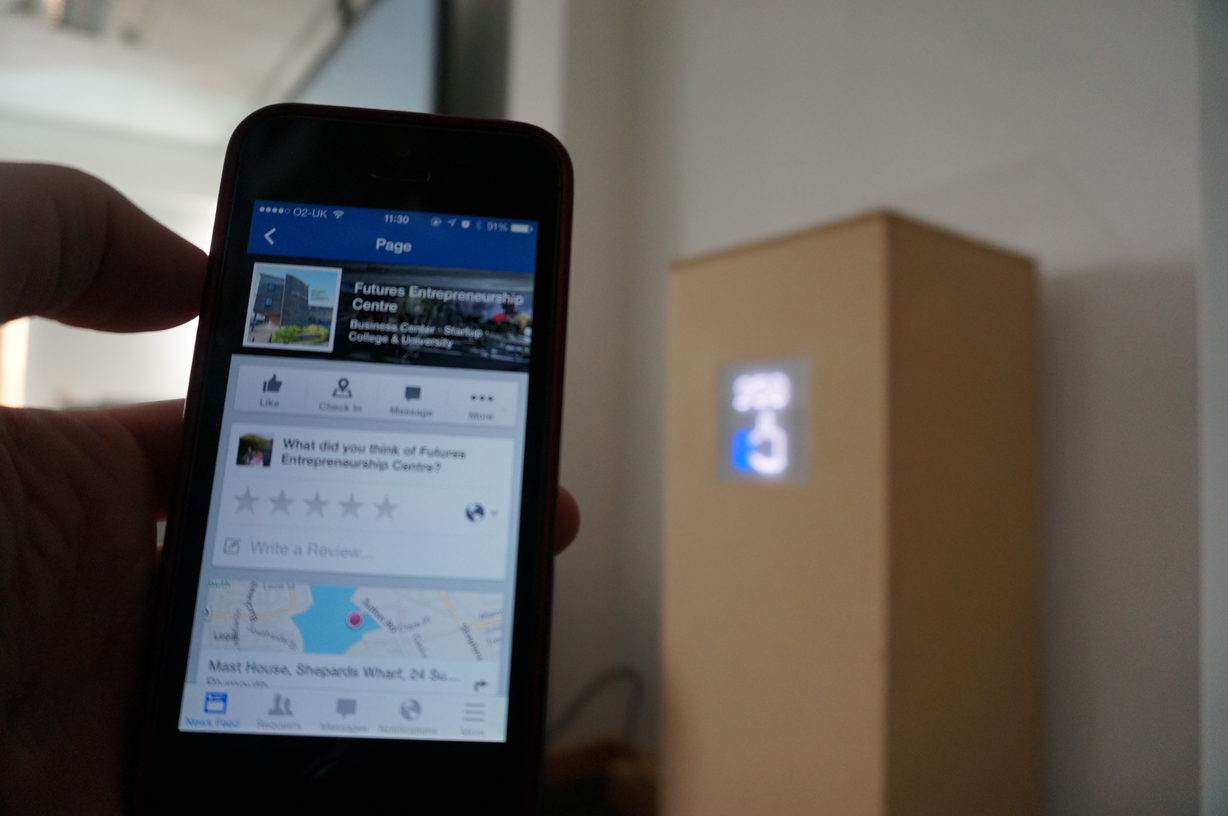Light Plinth
Light Plinth was a product developed within Wonder Room in late 2012. In its original form it was the physical manifestation of a virtual identity. It reflected the 'likes' that a company/product/service has on their Facebook page, the idea being that it could be used as a marketing or motivational tool. For example multiple products or campaigns that are being run within a company, each product would sit atop its own plinth which displays its rating, encouraging friendly competition. This rating would be through a measurement of Facebook likes, each product could have its own Facebook page. This could be through displaying the like total number itself, or setting a target sum e.g. 1000 likes, with which the display would count down, building anticipation towards the zero. This information is displayed in real time, allowing viewers to interact with the physical item and watch their 'like' increase or decrease the number.

I built the prototype using an internal Arduino microcontroller running a 32x32 LED Matrix. The Arduino either connected wirelessly or via ethernet to the internet and would ping a my server, which would scrape data from Facebook's public data XML. The Arduino would then extract the likes from this data and display either the number of likes (or detract it from the target number for that plinth).

Towards the end of my placement at Wonder Room, Light Plinth for the launch of Plymouth University's new FUTURES Centre for Entrepreneurship.
In the year after my placement, and in response to the prototype that was shown in the launch of FUTURES Entrepreneurship Centre, I was then commissioned by the university to help build and install 10 Light Plinths for the National Student Survey. Five plinths; one for each of the University's faculties would be displayed throughout each of the faculties; placed in the faculty's main foyer or reception area. Another five would display each of the faculties together in the entrance of the university's library. A major issue for the University was engagement with this survey, so the goal of Light Plinth was to try and encourage engagement and participation with the survey by encouraging competition amongst the faculties.
All the plinths began with a '?' in the weeks preceding the National Student Survey, then once the survey was released, each plinth began at 0%. The plinths would update daily with the results from each faculty, coming dirctly from the National Student Survey, with the percentage of the students who have filled in the survey. The photo below shows the five Light Plinths together in the library half way through the process.
Overall this iteration of Light Plinth can be seen as a success, as there were recorded higher rates of participation in the National Student Survey that year for the University.
